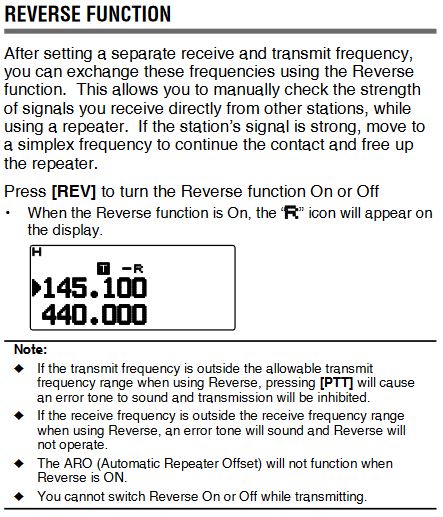If you aren’t familiar with VHF/UHF repeater operation, now is a good time to review it here. Repeaters are frequently used for chatting with local hams, regular nets, and EmComm use.
An occasional problem with repeater operation is when a weak transmitter doesn’t have enough power to keep the repeater’s squelch open. That is, you can tell someone is there but hear little or no signal. Could be that the transmitter is in a sheltered location, doesn’t have a good antenna, or using too little power.
For whatever reason, they can’t break through with a strong enough signal to be heard. If you suspect this is happening, you can try listening to them directly instead of through the repeater. It’s possible that you are closer to the weak transmitter than the repeater is.

Many hand-held radios (HTs) and mobile VHF/UHF transceivers support this with a repeater reverse function, typically by pushing a button on the radio.

Recall that a repeater re-transmits what it hears on a different frequency. The difference in transmit and receive frequencies is called repeater offset and this minimal difference is needed to allow for sharp filtering between them so that the strong transmit signal doesn’t damage sensitive receiver circuitry.
By selecting reverse on a transceiver you then listen to the repeater input frequency instead of its output. In this manner you can get the weak transmitter’s true signal strength and quality, not what the repeater re-transmits. This assumes that you are receiving better than the repeater, which is a possibility but not a certainty.
Useful when you want to see if a weak signal Continue reading
